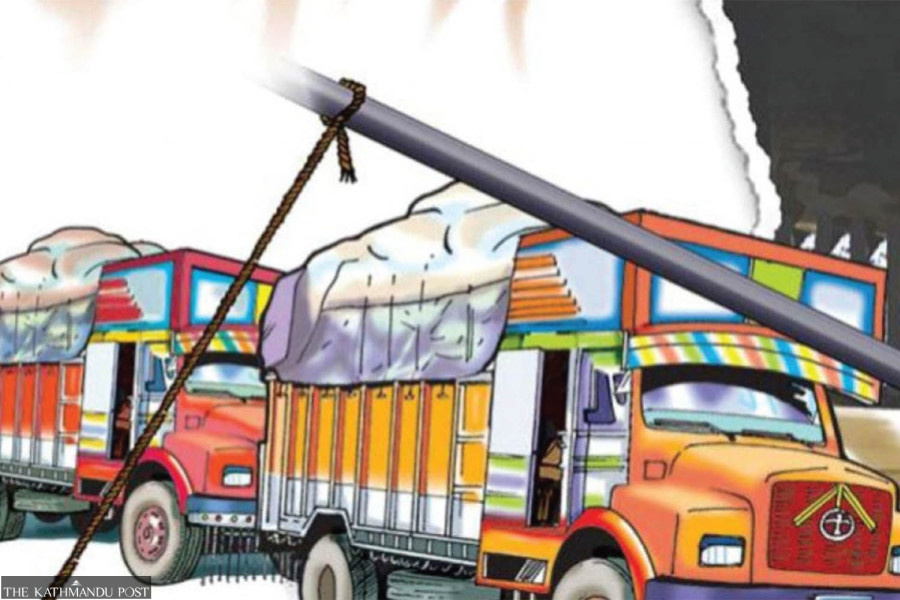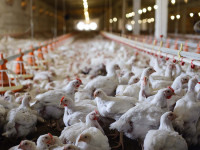Money
Nepal’s foreign trade sees uptick on festive demand push
Imports grew by a marginal 0.17 percent to Rs513.38 billion while exports rose 4.16 percent to Rs52.67 billion.
Post Report
Nepal’s trade made slight improvements in the first four months of the current fiscal year due to festive consumption push.
According to the Department of Customs, exports increased 4.16 percent to Rs52.67 billion compared to a decrease of 7.68 percent in the same period last fiscal year.
The exports of soybean oil, cardamom, tea and carpet, among others commodities, increased in the review period.
The imports increased by a marginal 0.17 percent to Rs513.38 billion in the review period compared to a decrease of 3.7 percent a year ago. The imports of petroleum products, gold, iron and steel and automobiles among others increased.
“With a slowdown in the construction sector, there is a sharp decline in the demand for cement,” said Jagadish Chandra Pokharel, an economist.
“Cement export was doing well but the Indian standard certification issue has halted exports. This will lead cement factories to collapse.”
The government needs to be serious on the issue, he demanded.
In recent times, new exportable products like zinc sheets and plywood were also doing well, especially in the Indian market, but the market has come to a standstill, he said.
“The export of products like soybean or palm oil which has been boosting the export are not sustainable products.”
“Nepal’s economy has witnessed a slowdown in the past one-and-a-half years and failed to rebound,” said Puskar Bajracharya, an economist. “It’s largely due to political instability.”
The slowdown in trade—export and import—shows that the demand has slowed down impacting the overall economy, he said.
“The government should launch special packages like providing incentives in the production sector. The inter-bank interest rate should be reduced,” said Bajracharya. If the bank interest rate is reduced to 4 percent to 5 percent even for 2–4 months, it would help to pick up the economy. But the central government is not daring to do it. That is why economic revival is taking time.”
Though the bank interest has been reduced to 6 percent, consumer trust has not built up and there is no improvement in investor confidence,” he said.
“This has resulted in money piling up in banks with no new investment taking place.”
In terms of export, there are no visionary policies and actions to increase export in the long term, said Bajracharya. Unstable market, shift in production and the lack of coordination among government agencies have left Nepal’s already low exports flickering.
The economy is expected to increase by a mere 3 percent this fiscal year as the output of the key economic indicators like agriculture, tourism and electricity are likely to remain low, particularly after the devastating late September floods and landslides.
The devastation killed nearly 250 people.
A heavy rainfall in late September, which triggered floods and landslides in most parts of the country, caused a loss of Rs46.68 billion to Nepal’s economy, nearly three-fold more than the initial estimates.
According to the preliminary loss and damage assessment report of the National Disaster Risk Reduction and Management Authority under the home ministry, the floods and landslides from September 26 to 28 caused significant damage to the physical infrastructure sector, followed by the social and productive sectors
The long-term impact of decline in trade is not good.
Though the growth target is 6 to 6.5 percent, it is difficult to achieve the 3 percent, said Bajracharya.
The slide in trade is negatively affecting revenue collection, making it difficult for the government to manage expenditures, said Bajracharya. As the government’s costs are huge amid below-mark revenue collection, capital expenditure in development projects will be hit.
Bajracharya said the major consumption months of October–November have passed without an uptick in trade.
The report showed that exports have declined to both India and China—Nepal’s biggest export markets.
Exports to India fell 5.3 percent, China by 24.8 percent and to other countries dropped by 6.6 percent.
Imports also declined from India, China and other countries.
The imports from India declined by 3.9 percent, China by 1.5 percent and other countries by 7.9 percent in the review period.
The total trade deficit decreased by 4.0 percent to Rs352.37 billion in the first three months of the current fiscal year. The deficit had increased 2.1 percent in the corresponding period of the previous year. The export-import ratio decreased to 9.8 percent in the review period from 10 percent in the corresponding period of the previous year.
The central bank report said that in terms of composition of foreign trade, the intermediate and final consumption of goods accounted for 51.3 percent and 47.6 percent of total exports, respectively, whereas the ratio of capital goods in total exports remained at 1.1 percent in the review period. In the same period of the previous fiscal, the ratio of intermediate, capital and final consumption of goods remained 55.2 percent, 0.33 percent and 44.5 percent of total exports, respectively.




 9.12°C Kathmandu
9.12°C Kathmandu












%20(1).jpg&w=300&height=200)
